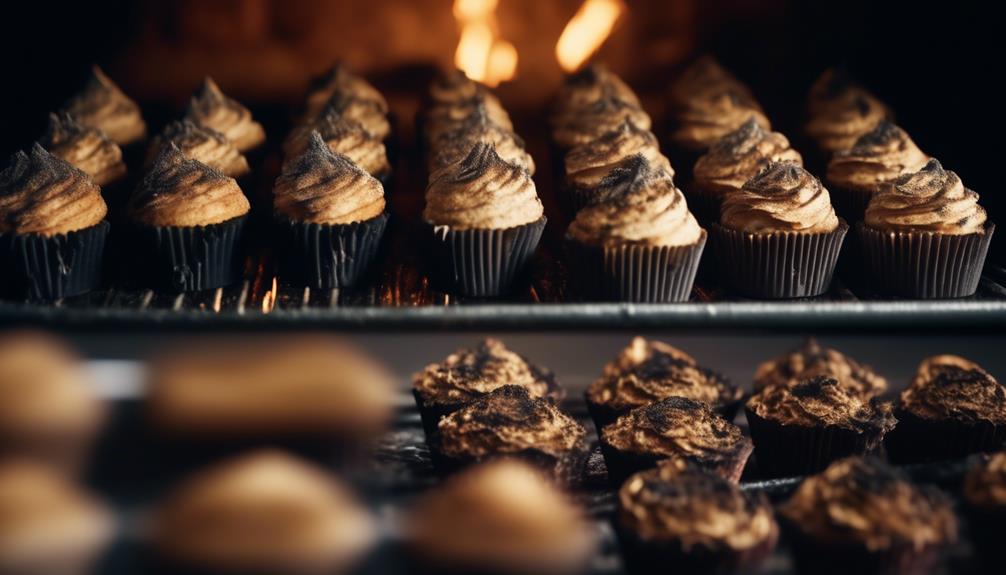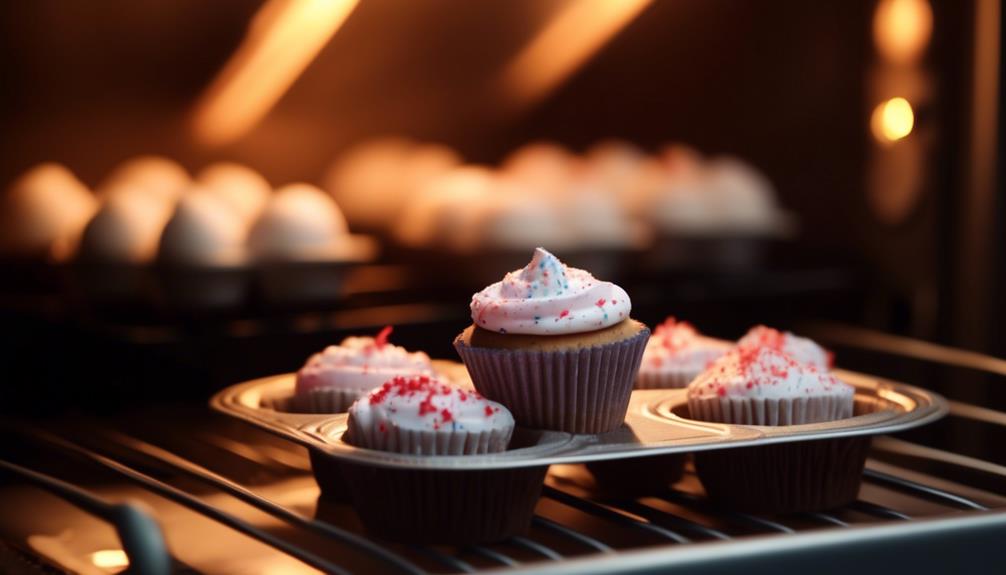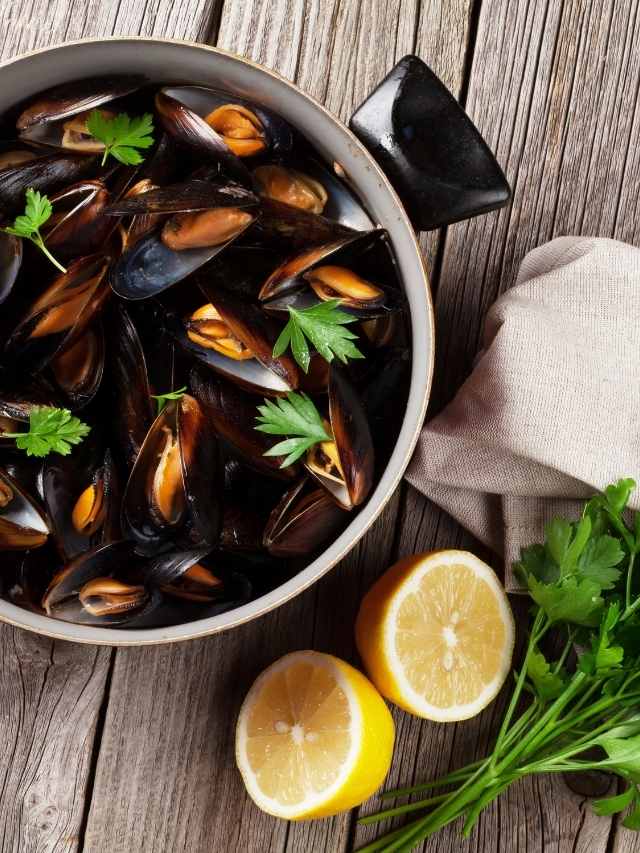Can You Put Paper Cupcake Liners in the Oven
Baking brings about a bounty of beautiful bites, but have you ever pondered the safety of using paper cupcake liners in the oven? As a budding baker, it's crucial to comprehend not only the art of creating delicious treats but also the safety aspects involved in the process.
It's not uncommon to wonder if those delicate paper liners can withstand the heat of your oven. Well, let's get into the nitty-gritty, and you might find the answer quite surprising.
Understanding Paper Cupcake Liners

Before you pop your next batch of cupcakes into the oven, it's crucial to understand the role and importance of paper cupcake liners in the baking process.
These aren't just frills; they serve a functional purpose. Their primary job is to provide a non-stick surface for your baked goods.
But they're not just about utility; liner aesthetics play a significant role too. The color, pattern, and design of your liners can enhance the final cupcake presentation, making your treats not only delicious but visually appealing.
So, when you're selecting liners, consider both their practical use and their aesthetic contribution.
In essence, a well-chosen paper cupcake liner can make a big difference in both the baking process and the end product's presentation.
The Basics of Baking Safety
When it comes to baking, it's critical that you understand the basics of safety to prevent accidents and ensure a seamless process.
- Baking equipment care:
- Always clean your tools after use to prevent build-up of old food that can become hazardous.
- Store sharp tools carefully, and handle them properly to avoid injuries.
- Oven maintenance tips:
- Regularly check the oven's temperature accuracy. An oven that's too hot can be a fire risk.
- Clean your oven frequently to prevent build-up of grease and food particles, which can cause smoke or even fire.
In essence, taking care of your baking equipment and maintaining your oven are key steps to baking safely. Always remember, a safe kitchen is a happy kitchen.
Paper Liners: Oven Safe or Not?

While keeping your kitchen equipment in top shape is essential, it's equally important to consider the safety of baking accessories, such as paper cupcake liners, when they're exposed to oven heat.
You might wonder if these liners could pose a fire risk or release harmful chemicals. In general, paper cupcake liners are indeed oven-safe. They're designed to withstand the temperature typically required for baking cupcakes, usually around 350°F.
However, it's crucial to not let the liners touch the oven's walls as it could lead to burning. For safety reasons, you might want to consider liner alternatives, like silicone or foil liners.
Alternative Materials for Cupcake Liners
In your quest for safe and efficient baking, you've likely considered alternatives to paper cupcake liners, and materials like silicone and foil are excellent options worth exploring. Notably, silicone liners offer numerous benefits:
- They're reusable, making them environmentally friendly and cost-efficient.
- They're non-stick, ensuring your cupcakes come out perfectly every time.
However, if you're looking for biodegradable options, consider these:
- Unbleached paper liners are compostable and don't contain any dyes or chemicals.
- Liners made from bamboo or other sustainable materials are also a great choice.
Tips for Using Paper Liners in the Oven

Navigating the baking world, you'll find that using paper liners in the oven requires a touch of finesse and a handful of strategic tips.
First off, liner selection is crucial. Opt for high-quality, greaseproof liners as they resist oil absorption, maintaining their color and shape during baking. They also prevent the dreaded cupcake sticking scenario.
Secondly, consider the baking duration. If you're baking at a high temperature or for an extended period, monitor your cupcakes closely. Paper liners tend to darken with prolonged exposure to heat.
The Science Behind Oven-Safe Paper
Having understood the importance of selecting high-quality liners and keeping an eye on the baking time, you might now be wondering about the properties that make paper liners safe for oven use.
- Paper Combustion: Paper's ignition point is 451°F. Liners don't catch fire in the oven because baking temperatures are usually below this point. However, it's vital to note that paper can scorch or darken at lower temperatures, especially if left in the oven for prolonged periods.
- Parchment Versus Paper: Parchment paper, often used in baking, can withstand higher temperatures than regular paper due to a silicone coating. This coating makes parchment paper non-stick and heat-resistant, unlike regular paper, which could stick to your baked goods and mightn't be as heat-resistant.
Understanding these principles, you can confidently use paper liners in your baking endeavors.
Preventing Liner and Cupcake Disasters

To ensure culinary success, it's crucial that you're armed with effective strategies to avert common cupcake liner mishaps.
Firstly, pay attention to liner aesthetics. The design and color of your liner must complement your cupcake's appearance.
While baking, ensure liners aren't overfilled to prevent batter spillage. This not only affects cupcake presentation but also can cause a messy oven.
Next, avoid using low-quality liners. They may stick to the cupcakes, ripping apart when peeled, ruining both the taste and presentation.
Lastly, preheat your oven correctly. An oven too hot can scorch the liners, while too cool can leave them soggy. Both scenarios are disastrous for your cupcakes.
With these tips, you're ready to produce perfect cupcakes every time.
Common Paper Liner Misconceptions
While you're diligently following these tips to avoid cupcake disasters, you might still find yourself falling prey to some common misconceptions about using paper liners.
- Misconception 1: Liner aesthetics don't matter.
- In reality, the color and design of your liners can affect how your cupcakes are perceived. Dark liners can give the illusion of a more baked or burnt cupcake, while light ones can make your cupcakes seem undercooked.
- Misconception 2: Paper liners aren't eco-friendly.
- Many believe that using paper liners contributes to waste. However, most modern liners are biodegradable and compostable, addressing sustainability concerns. Some brands even use recycled materials.
The Role of Temperature Control

In the realm of baking, temperature control plays a crucial role, particularly when you're using paper cupcake liners. Temperature fluctuations can lead to uneven baking, causing your cupcakes to rise unevenly or burn. This is where precise preheating steps in.
You need to preheat your oven to the exact temperature stated in your recipe. A properly preheated oven ensures that your cupcakes start baking the moment they're in, leading to a consistent, desirable texture. If the oven's too hot, the paper liners could scorch. Too cold, and the batter might soak through the liners.
Thus, maintaining the right temperature is key to successful baking with paper cupcake liners. It's all about control, precision, and understanding your oven's quirks.
Experimenting With Different Baking Conditions
One might find that experimenting with different baking conditions can significantly impact the outcome of your cupcakes, especially when using paper liners. Baking troubleshooting usually includes exploring recipe variations and tweaking the baking environment to achieve optimal results.
Let's consider two key variables:
- Temperature: Over or under-heating can affect your cupcakes' rise, texture, and color. Experiment by adjusting the temperature in small increments.
- *Under-heating*: May result in undercooked or sunken cupcakes.
- *Over-heating*: Can cause overly browned or dried out cupcakes.
- Baking Time: Similarly, varying baking times can bring about different effects.
- *Shorter Baking Time*: Can produce moist, but potentially undercooked cupcakes.
- *Longer Baking Time*: May result in dry, but well-cooked cupcakes.
How to Choose Quality Cupcake Liners

After mastering the art of adjusting baking conditions for perfect cupcakes, it's equally crucial that you don't underestimate the role of using top-notch cupcake liners. Your liner selection can make a significant difference in the outcome of your baking endeavors. High-quality liners shouldn't stick to the cupcakes, nor should they become soggy or discolored.
To find the best, carry out a durability test. Bake a small batch of cupcakes using different liners and compare the results. Check for any signs of tearing, leakage, or color changes. Also, consider the thickness and the material of the liners. Thin liners may not hold up well during baking, while silicone or foil liners tend to maintain their shape better.
It's all about finding a balance between durability, functionality, and aesthetics.
Potential Risks of Paper Liners
Despite their popularity, paper cupcake liners aren't without their potential risks and challenges. Two main issues are associated with these liners:
Liner Flammability
- Paper liners, especially low-quality ones can easily catch fire if they come into contact with a direct heat source.
- Overfilled liners can spill batter on the oven's heating elements, creating a fire hazard.
Toxicity Concerns
- Some paper liners may be bleached or dyed with chemicals harmful for consumption.
- When exposed to high heat, these toxins can potentially leak into your baked goods.
Advantages of Using Paper Liners

While being mindful of these potential risks, you'll find that paper cupcake liners also bring numerous benefits to your baking process. One key advantage is liner versatility. These liners come in various sizes, shapes, and designs, allowing you to customize your baked goods to suit any occasion.
They're also convenient, eliminating the need for greasing and making cleanup easier. The environmental impact is another advantage to consider. Paper liners are often biodegradable, reducing waste when compared with their plastic or foil counterparts.
Expert Tips for Perfect Cupcakes
To ensure your cupcakes turn out impeccably every time, there are a few expert tips you'll want to follow.
- Master the Art of Frosting:
- Frosting Techniques: Perfect the swirl by applying steady pressure when piping. You can also experiment with different nozzles to create unique designs.
- Timing: Wait until your cupcakes have cooled completely before frosting. Applying frosting to a warm cupcake can cause it to melt and slide off.
- Experiment with Flavors:
- Cupcake Flavors: Don't be afraid to try new combinations. Unique flavors like lavender and honey or chai spice could become your new favorite.
- Test Kitchen: Make a small batch first to ensure the flavors are balanced.
Recap: Paper Liners in the Oven

Understanding how to properly use paper liners in the oven can dramatically transform your cupcake baking process, ensuring every batch comes out picture-perfect and delicious. The key is to ensure the liners are fully covered by batter and not overfilled, preventing potential fire hazards.
Consider liner alternatives if you're out of paper liners. Silicone molds, parchment paper, or even buttered and floured tins can save the day. These baking hacks not only provide a solution but can also yield interestingly-shaped cupcakes.
Conclusion
In conclusion, you can indeed put paper cupcake liners in the oven. However, always be mindful of the temperature and baking time to avoid any fire hazards.
Alternatives like silicone or foil liners are great, but paper liners have unique benefits too. Remember, success lies in the details and using quality liners can make a difference.
Ensure you follow expert tips to achieve perfect cupcakes. Stay safe and have fun baking!





